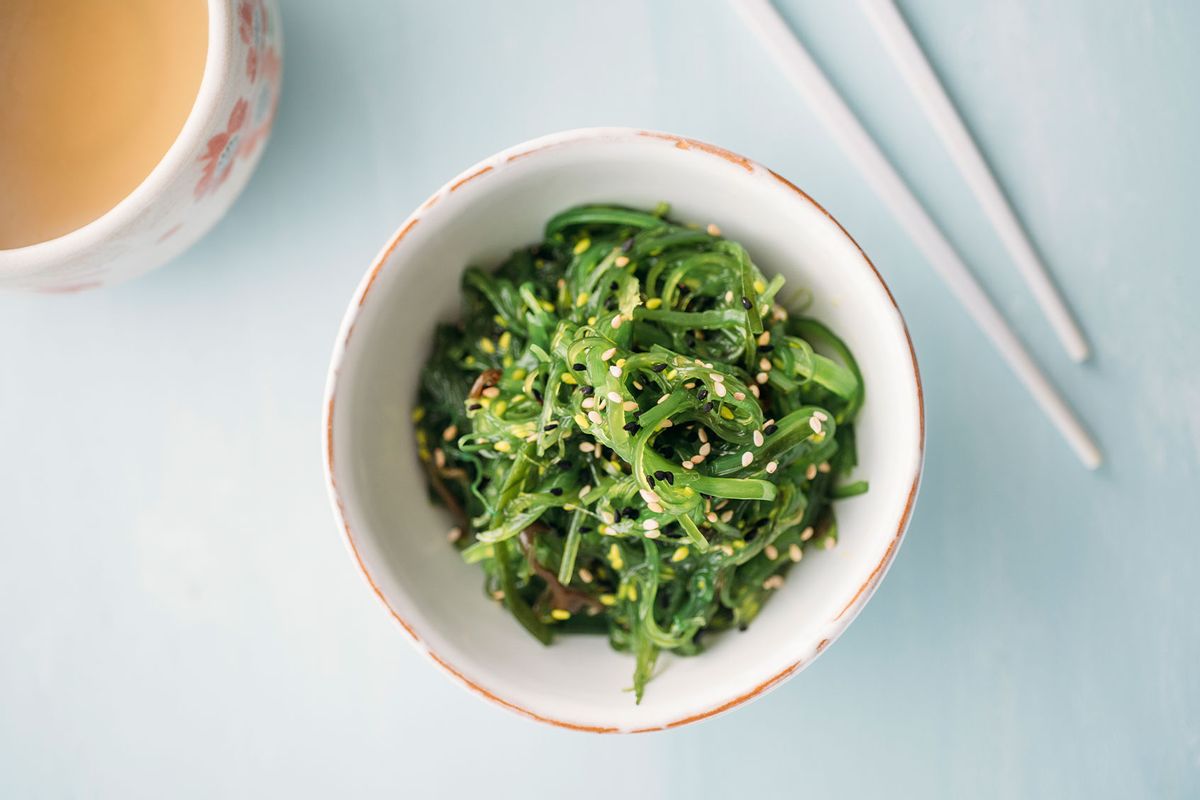Seaweed isn't something that generally features today in European recipe books, even though it is widely eaten in Asia. But our team has discovered molecular evidence that shows this wasn't always the case. People in Europe ate seaweed and freshwater aquatic plants from the Stone Age right up until the Middle Ages before it disappeared from our plates.
Our evidence came from skeletal remains, namely the calculus (hardened dental plaque) that built up around the teeth of these people when they were alive. Many centuries later, this calculus still contains molecules that record the food that people ingested.
We analyzed the calculus from 74 skeletal remains from 28 archaeological sites across Europe. The sites span a period of several thousand years starting in the Mesolithic, when people hunted and gathered their food, through to the earliest farming societies (a stage called the Neolithic) all the way up to the Middle Ages.
Our results suggest that seaweed was a habitual part of the diet for the time periods we studied and became a marginal food only relatively recently.
Unsurprisingly, most of the sites where we detected the consumption of seaweed are coastal. But we also found evidence from inland sites that people were ingesting freshwater aquatic plants, including lilies and pondweed. We also found an example of people consuming sea kale.
How are we sure people ate seaweed?
We identified several types of molecules in the dental calculus that collectively are characteristic of seaweed. We refer to these as "biomarkers". They include a set of chemical compounds called alkylpyrroles. When we detect these compounds together in calculus, we can be fairly sure where they came from. The same goes for other compounds characteristic of seaweed and freshwater plants.
To have become embedded in dental calculus, the seaweed and freshwater plants had to have been in the mouth and most probably chewed. Biomarkers do not survive in all our samples, but where they do, they're found consistently across many individuals we analyzed from different places. This suggests seaweed was probably a routine part of the diet.
Perceptions of seaweed
Today, seaweed is often seen as the scourge of beaches. It accumulates at the high-water mark where it can create a slippery and sometimes smelly barrier to the sea.
But it is a wondrous world of its own. There are over 10,000 species of seaweed worldwide living in the intertidal zone (where the ocean meets the land between high and low tides) and the subtidal zone (a region below the intertidal zone that is continuously covered by water). Around 145 of these species are eaten today and in parts of Asia it is commonplace.
Seaweed is edible, nutritious, sometimes medicinal, abundant and local. Although overconsumption can cause iodine toxicity, there are no poisonous intertidal species in Europe. It is also available all year round, which would have been particularly useful in the past, when food supplies were less reliable.
Reconstructing ancient diets
Reconstructing ancient diets is challenging and is generally more difficult as you go back in time. This helps explain why we've only just realized how much seaweed was being eaten by ancient Europeans.
In archaeology, evidence for ancient diets often comes from physical remains: animal bones, fish bones and the hard parts of shellfish. Evidence for plants as part of the diet before farming, however, is rare.
Techniques to study molecules from archaeological remains have been around for some time. A key method is known as carbon/nitrogen (C and N) stable isotope analysis. This is widely used to reconstruct ancient human and animal diets based on the relative proportions of these elements in bone collagen.
But the presence of plants has been difficult to identify, due to their low nitrogen content. Their presence is masked by an overwhelming signal for animals and fish.
Hiding in plain sight
The evidence for seaweed had been present all along, but unrecognised. Our discovery provides a perfect example of how perceptions of what we regard as food influence interpretations of ancient practices.
Seaweed was detected in chunks that had been chewed (and presumably spat out) at the 12,000-year-old site of Monte Verde, Chile. But when it is found at archaeological sites, it is more commonly interpreted as having been used for things other than food, such as fuel and food wrappings.
In European archaeology, there is a longstanding perception that Mesolithic hunter-gatherers ate lots of seafood, but that when people started farming, they focused on food sourced from land, such as their livestock. Our findings hammer another nail into the coffin of this theory.
Today, only a few traditional recipes remain, such as laverbread made from the seaweed species Porphyra umbilicalis in Wales. It's still not clear why seaweed declined as a staple source of food in Europe after the Middle Ages.
What are the implications?
Our unexpected discovery changes the way we understand past people. It also alters our perceptions of how they understood the landscape and how they exploited local resources.
It suggests, not for the first time, that we vastly underestimate ancient people. They had a knowledge, particularly about the natural world, that is difficult for us to imagine today.
The finding also reminds us that archaeological remains are minute windows into the past, reinforcing the care required when developing theories based on limited evidence.
The consumption of plants, upon which our world depends, has been habitually left out of dietary theories from our pre-agrarian past. Rigid theories have sometimes forgotten that humans were behind these archaeological cultures — and that they were probably similar to us in their curiosity and needs.
Today seaweed sits, largely unused as food, on our doorstep. Making the edible species a bigger component of our diets could even contribute to making our food supplies more sustainable.
Karen Hardy, Professor of Prehistoric Archaeology, University of Glasgow and Stephen Buckley, Research Fellow, Department of Archaeology, University of York
This article is republished from The Conversation under a Creative Commons license. Read the original article.



Shares